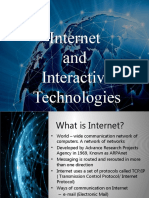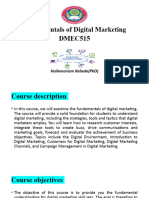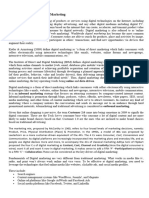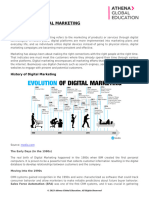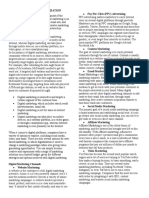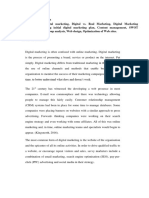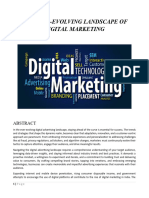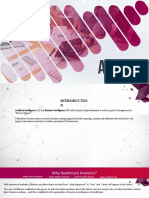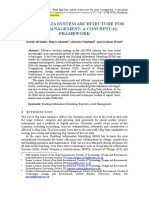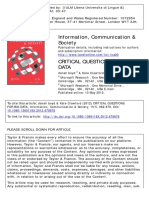0% found this document useful (0 votes)
14 views30 pagesUnit X - Contomperory Technologies
The document provides an overview of contemporary technologies, focusing on digital marketing, data warehousing, data mining, big data, artificial intelligence, machine learning, data analytics, cybersecurity, cloud computing, and the evolution of the web. It highlights the importance of digital channels in marketing, the role of data warehouses in business intelligence, and the impact of emerging technologies on decision-making and consumer behavior. Additionally, it discusses cybersecurity threats and preventive measures, as well as the significance of cloud computing and IoT in modern business operations.
Uploaded by
pokhrelrupak948Copyright
© © All Rights Reserved
We take content rights seriously. If you suspect this is your content, claim it here.
Available Formats
Download as PDF, TXT or read online on Scribd
0% found this document useful (0 votes)
14 views30 pagesUnit X - Contomperory Technologies
The document provides an overview of contemporary technologies, focusing on digital marketing, data warehousing, data mining, big data, artificial intelligence, machine learning, data analytics, cybersecurity, cloud computing, and the evolution of the web. It highlights the importance of digital channels in marketing, the role of data warehouses in business intelligence, and the impact of emerging technologies on decision-making and consumer behavior. Additionally, it discusses cybersecurity threats and preventive measures, as well as the significance of cloud computing and IoT in modern business operations.
Uploaded by
pokhrelrupak948Copyright
© © All Rights Reserved
We take content rights seriously. If you suspect this is your content, claim it here.
Available Formats
Download as PDF, TXT or read online on Scribd
/ 30


